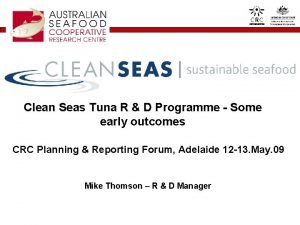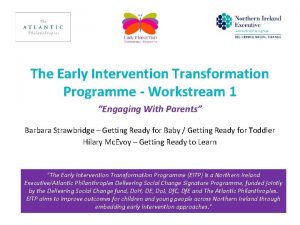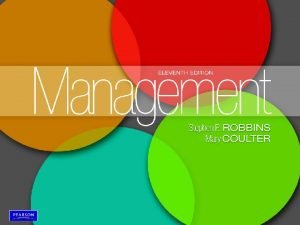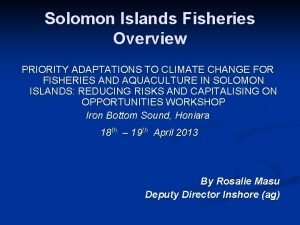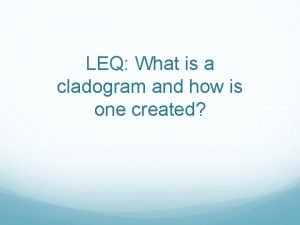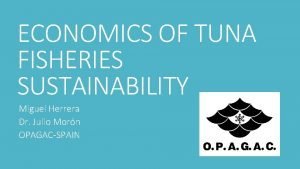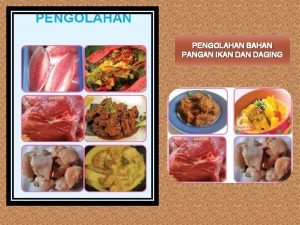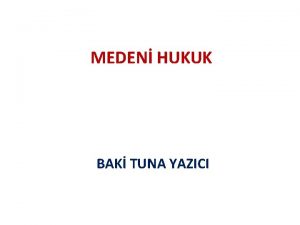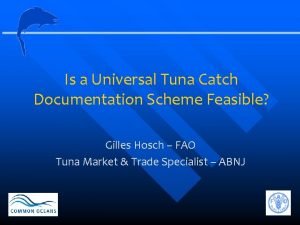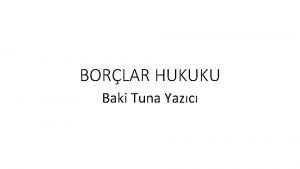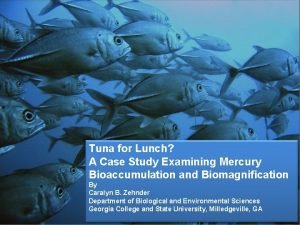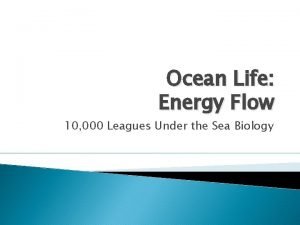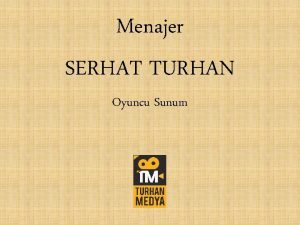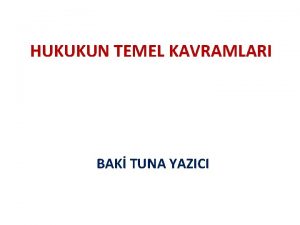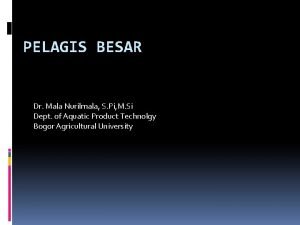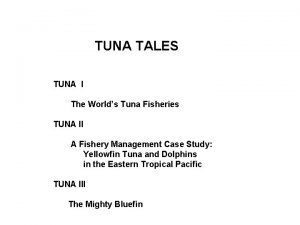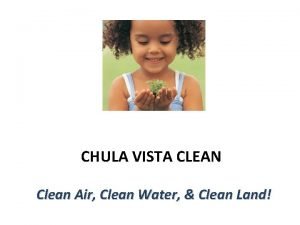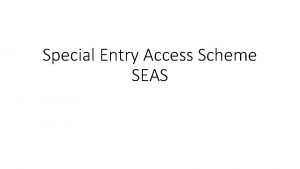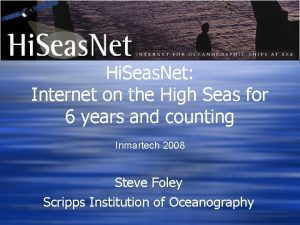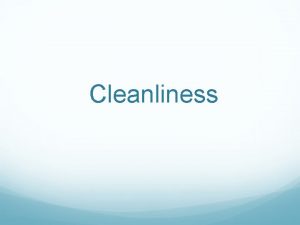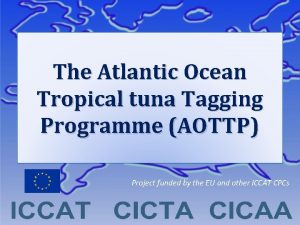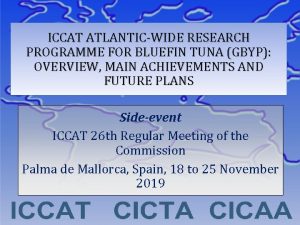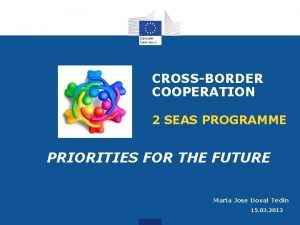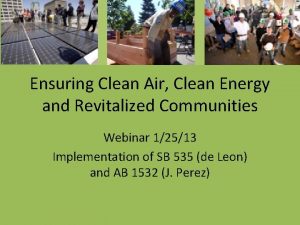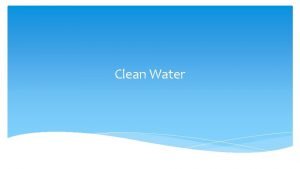Clean Seas Tuna R D Programme Some early



























- Slides: 27

Clean Seas Tuna R & D Programme - Some early outcomes CRC Planning & Reporting Forum, Adelaide 12 -13. May. 09 Mike Thomson – R & D Manager

Establishment of R & D Capacity • CST will engage a full time R&D Manager who will be responsible for all aspects of the nine core activities

R & D Capacity - Collaborators • The R & D Manager will establish and enhance cost effective collaborative links between research providers (inside and outside of the CRC) via effective relationships (e. g. CRC partners)

R & D Capacity - International • The R & D Manager will establish and enhance cost effective collaborative links between research providers (inside and outside of the CRC) via effective relationships – e. g. Kinki University MOU 22. Sep. 2008

AND Ausindustry, PIRSA, the South Australian Marine Finfish Farmers Association, Northern Territory Department of Regional Development / Primary Industry / Fisheries and Resources, Panaquatic and Skretting AND Kinki University, Hellenic Center for Marine Research, Heinrich-Heine Universität, University of Maryland, EU research consortiums SELFDOTT and REPRODOTT, Inter American Tropical Tuna Commission and the Tuna Research and Conservation Center

R & D Capacity - Post Graduates

R & D Capacity - Reporting ! • The R&D Manager will provide annual progress reports to the Seafood CRC that detail achievements against the agreed milestones for each of the nine Core Activities

Results versus Objectives • SBT 1. To produce quality fertilised SBT eggs for use in larval rearing, weaning trials and for commercial production of juveniles – Developed anaesthetics and handling techniques (needs improvement) – Development and refinement of hormones and delivery systems (successful !) – Initial data on levels of reproductive hormones (testosterone, 11 -ketotestosterone (11 KT) and 17β-estradiol (E 2) in SBT have been collected – An ELISA technique for quantifying circulating blood levels of LHRH has been tested successfully in Australia for SBT – Viability of thawed samples of cryopreserved SBT sperm has been demonstrated

Results versus Objectives • SBT 1. To produce quality fertilised SBT eggs for use in larval rearing, weaning trials and for commercial production of juveniles – SBT and YTK Ki. SS receptor c. DNA sequences have been isolated – Ligation of SBT Ki. SS receptor into an expression vector is ongoing – Ultimate aim of developing an optimised hormone delivery system based on Ki. SS for advancing SBT and YTK puberty

Results versus Objectives • SBT 1. To produce quality fertilised SBT eggs for use in larval rearing, weaning trials and for commercial production of juveniles – – World first spawning March. 2008 Continuous spawning over a 35 day period from 12. March. 2009 Over 50 million eggs fertilised Numerous instances of over 90% fertilisation achieved

SBT Egg Development

Results versus Objectives • SBT 2. To establish protocols and methods, including feeds/feeding for the commercial production of juveniles to support a propagated tuna aquaculture industry. – 30 million larvae produced – http: //www. youtube. com/watch? v=J 8 c Nmd. BL 73 Q – Acceptance of rotifer , artemia and live fish larvae – SBT fingerling production, with fish having achieved approximately 8 cm in length and >45 days in age – Progress in weaning onto moist pellets

Weaning onto moist pellets

SBT Larval Research • Commercial protocols at CST • Feeding protocols being developed at SARDI • Eggs ozonated at CST, translocated and early larval work conducted at NSW DPI • Tanks and copepods prepared at Darwin • Archival health samples to be analysed at SARDI and interstate laboratories (PCR and tissue culture) • Egg biochemistry taken for TAFI

Results versus Objectives • SBT 3. To develop / evaluate a cost effective diet for growout of wild caught and propagated SBT with FCR < 4. 5 : 1. 0 – 2 trials conducted with Ridleys in 2008 season (CRC funded) – Follow up trials with Ridleys and Skretting in 2009 (precommercial) – Benchmarking relationships developed in Japan with Kinki and Skretting

Results versus Objectives • YTK Reduce deformity rates to less than ten percent before hatchery grading – TAFI project • • • Egg ozonation tested safe and implemented (for SBT) Egg quality confirmed as OK Live feed quality checked and improvements made Physical parameters checked and improvements made Malformation levels reduced over time (from 28 to 50% to 12 to 29%) and tanks modified • Training provided in key areas: malformations, ozonation and rigour in measurements • Recommendations given and most implemented and or incorporated into new research

Results versus Objectives • YTK Reduce deformity rates to less than ten percent before hatchery grading – Current larval project • Start with high rotifer densities (15 -20/ml) and also artemia densities (25/ml) and maintain • Artemia from 12 DPH (or as early as 10) and no need for co-feeding of rotifers past 3 days and test inert diet from day 8

Results versus Objectives • YTK Reduce production costs through improved fish health management and disease control • Testing of potential in feed medicines

Results versus Objectives • YTK Reduce production costs through improved fish health management and disease control • Fluke prevalence against treatment

Results versus Objectives • YTK Reduce production costs through improved fish health management and disease control • Salinity trial (small fish) • Statistics pending

Results versus Objectives • YTK Reduce production costs through improved fish health management and disease control • • • In feed cage trial data to be analysed Anti-fouling trials to be established Blood fluke and kudoa surveys to be initiated Health protocols for SBT larvae to be developed Testing of latest winter diets for performance

Results versus Objectives • YTK Improve growth and FCR with better feeds and regimes – Concept proposal accepted by CRC RAC (within TBP) – Full proposal to next mtg – Ph. D started

Results versus Objectives • YTK Improve grow out processes to reduce cycle time – “Understanding” YTK project first mtg Wednesday ! • Effects of stocking size and sea temperatures • Effects of maturity • Describe baseline product quality parameters (flesh oil level and distribution), nutritional composition, shelf life and assess effects of new product formats and finishing diets

Results versus Objectives • Develop a range of genetic improvement options for YTK and SBT - Genetics scoping study • CST can avoid excessive inbreeding by deploying a. more tanks, b. DNA tagging c. crossbreeding (cost $5 K to $50 K) = the major initial outcome. • 13 polymorphic loci have been verified which can be used to tag animals and identify population structure (stocks across WA, SA, Victoria, NSW, & NZ) • We now have people and tools on the ground that can be used to manage stocks, control inbreeding, etc. • CST should consider, over time, a realistic aim to develop an optimised cost-effective breeding program utilising the maximum number of families appropriate to the prevailing business environment • Draft final report submitted and the company is considering future options including mentoring project and wider collaboration (NIWA)

Results versus Objectives • Establish a post harvest capability to take advantage of market driven cost effective value adding opportunities • Report on “European Market Development Opportunities” • Short study on effects of maturation and harvest practices on product quality (report pending) • Proposal recently submitted to conduct: – consumer preferences for species, packaging (MAP and VAC), product formats and pricing – Market research and plan and detailed trade research report in US and Europe – Investigate shelf life extension methods including MAP – Development and testing of new fresh and frozen product format

Other Initiatives • Visiting scientist – Dr. Clive Talbot • Industry bursary – Morten Deichmann (NIWA) • Travel grants – various conferences and hatchery tours in 2009 • Marine Fish “Hub” project • Generally very happy to be a major contributory partner within the Seafood CRC !

“ This work formed part of a project of the Australian Seafood Cooperative Research Centre, and received funds from the Australian Government’s CRCs Programme, the Fisheries R&D Corporation and other CRC Participants”. AND Ausindustry, PIRSA, the South Australian Marine Finfish Farmers Association, Northern Territory Department of Regional Development / Primary Industry / Fisheries and Resources, Panaquatic and Skretting AND Kinki University, Hellenic Center for Marine Research, Heinrich-Heine Universität, University of Maryland, EU research consortiums SELFDOTT and REPRODOTT, Inter American Tropical Tuna Commission and the Tuna Research and Conservation Center
 Clean seas tuna
Clean seas tuna Clean up everybody let's clean up
Clean up everybody let's clean up Early intervention transformation programme
Early intervention transformation programme Neli listening rules
Neli listening rules Early cpr and early defibrillation can: *
Early cpr and early defibrillation can: * Examples of early management
Examples of early management Countable and uncountable nouns cake
Countable and uncountable nouns cake Some trust in horses
Some trust in horses Contact vs noncontact forces
Contact vs noncontact forces They say it only takes a little faith to move a mountain
They say it only takes a little faith to move a mountain Some say the world will end in fire some say in ice
Some say the world will end in fire some say in ice Sometimes you win some
Sometimes you win some Some say the world will end in fire some say in ice
Some say the world will end in fire some say in ice Pna tuna
Pna tuna Lancelet lamprey tuna salamander turtle leopard cladogram
Lancelet lamprey tuna salamander turtle leopard cladogram Opuntia apurimacensis
Opuntia apurimacensis Ullvi tuna
Ullvi tuna Dr miguel tuna
Dr miguel tuna Ikan berbadan pipih dan berenang secara berkelompok adalah
Ikan berbadan pipih dan berenang secara berkelompok adalah Baki tuna yazıcı
Baki tuna yazıcı Gilles hosch
Gilles hosch Baki tuna yazıcı
Baki tuna yazıcı Tuna for lunch case study
Tuna for lunch case study Tuna food web
Tuna food web Akasya durağı stelyo gerçek adı
Akasya durağı stelyo gerçek adı Salvador domingo felipe jacinto
Salvador domingo felipe jacinto Baki tuna yazıcı
Baki tuna yazıcı Nama latin ikan tuna sirip biru
Nama latin ikan tuna sirip biru
